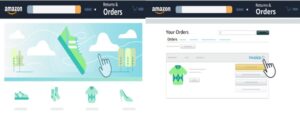Flat Rate VAT Scheme and UK Ecommerce Business
What is the VAT flat rate scheme?
Flat Rate VAT accounting scheme is a way of paying VAT. Whereby a business pays a fixed percentage of its annual turnover. Flat Rate VAT Scheme is an alternative way for limited companies to work out. How much VAT to pay HM Revenue and Customs. You can enjoy as a contractor working outside IR35 and UK Ecommerce business. The UK Ecommerce business enjoy first year 6.5% and second year 7.5% flat rate scheme.
The scheme is an incentive provided by the government to help simplify taxes. Using the standard VAT accounting method. It means that every quarter, you will require to fill in a VAT return form. However, since some contractors are eligible to join the Flat Rate VAT Scheme. You will charge a standard rate of 20% on your invoices. But pay HMRC a lower rate.
This amount can vary depending on your profession. VAT flat rates are set by HMRC. It is depending on the industry sector, from 4% to 14.5%.
The scheme is roll out for small businesses for UK VAT. The business does not have a large turnover. Thereby saving them from the hassle of tracking VAT on purchases. To be eligible for the scheme, businesses need to have an annual turnover of £150,000 or less (excluding VAT).
Fixed rate VAT advantages
A reduce amount of paperwork to handle as you are not submitting any of your input costs to HMRC. You need to do is keep the receipts from your purchases.
If you have a new business using the Flat Rate Scheme. Your first year flat rate scheme will get a discount of 1%. It is apply to your flat rate VAT percentage for up to the first 12 months of the VAT registration. However, if you have already been VAT registered for more than a year. Before joining then the discount doesn’t apply.
Flat rates for limited-cost businesses
If your business spends a small amount on goods. You will classify as a ‘limited-cost business’ or ‘limited-cost trader’. You must pay a higher flat rate of 16.5%.
To be classed as a limited-cost business, you must not spend more than 2% of your turnover on goods. If you spend less than £1,000 per year on goods. You are still considered a ‘limited-cost business’, even if £1,000 is more than 2% of your revenue.
When calculating how much you spend on goods. You should not include purchases such as capital goods or assets, food and drink, vehicles, or parts (unless you run a vehicle hiring business).
HMRC flat rate VAT scheme.
We have listed some of them below but we would always suggest discussing your circumstances before making any decisions.
- Make sure you apply the flat rate % to the total gross turnover, not the lower net turnover.
- You are aware of the new category of Limited Cost Trader which comes in from April 2017.
- If you are a sole trader, be careful as other income. You have such as rental income could be brought into your VAT rate UK calculation.
- If you make zero rated or exempt sales or sell abroad there are complications to be aware of
- You will control another rate business, you may not be allowed to use the flat rate scheme.
- If you expect your turnover to be over £150,000 in the next 12 months. You are not allowed to join the flat rate scheme
- You will have to leave your scheme. Once your turnover gets above the upper threshold. Which is currently £230,000 including VAT
- These are just some of the pitfalls to be aware of. We suggest reading HMRC’s guide here,
You also need to realise that VAT registered business will be charging VAT on your sales. You need to think about whether or not there is any commercial negative impact on your business. Whether your clients will able to claim the VAT back. This is a key thing to consider before voluntarily VAT registration.


